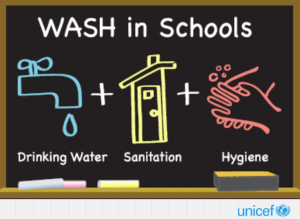
Access to potable water is a fundamental human right and essential to ongoing human health. Good health is also essential for students to obtain an education. For over 20 years, conditions of water safety and quality on reserve lands continue to be an ongoing concern in Canada. “Despite a substantial amount of funding allocated toward improving water infrastructure on reserve, an alarming proportion of communities face boil and drinking water advisories” (White, Murphy, & Spence, 2012, p. 1). As reserve land is under the Government of Canada’s jurisdiction, bureaucracy via regulatory frameworks, legacy of colonization, funding formulas, governance and policy issues remain as roadblocks to ensuring access to safe water on lands where Aboriginal students attend school.
Limited access to safe water impacts health creating discrepancies and disproportionate levels of disease and early death among Aboriginal people. Further, health discrepancies between Aboriginal and non-Aboriginal people are also directly and indirectly related to social, economic, cultural, and political inequities (Adelson, 2005).
Even though, in 1989, Canada played a prominent role in drafting the United Nations Convention on the Rights of the Child (UNCRC), a United Nations Child Find (UNICEF) report cited the plight of Aboriginal children due to lack of adequate housing, education, and clean water (UNICEF 2007). In 1997, the Government of Canada documented promises to improve living condition for Aboriginal children (Minister of Indian Affairs and Northern Development 1997). The 2007 Senate report (Canada, Standing Senate Committee on Human Rights 2007) recommended a legal framework and an independent national children’s commissioner to monitor implementation of children’s rights federally and to coordinate federal, provincial and territorial policies that affect children. But with no legal framework or commission to monitor change, very little continued to be done to improve living conditions.
Poor living conditions impact children’s lives as Aboriginal children have a 1.5 times greater probability of dying before their first birthday, higher rates of hospitalization for acute lung infections and accidental injury (Canadian Institute for Health Information 2004), higher rates of apprehension by child welfare services, and a greater chance of having to live in a series of foster homes outside their community (Trocmé, Fallon et al. 2005). Further, living in poverty means that a large proportion of Aboriginal children lack the basic necessities. “Aboriginal homes are often poorly constructed and ventilated; their plumbing systems are often inadequate for the number of residents; and their clean water supply is often unreliable. Six percent of these homes are without sewage services, and four percent lack running water and flush toilets” (Assembly of First Nations 2006).
One in three Aboriginal people consider their main drinking water unsafe to drink with 12 percent of communities have to boil their drinking water (Chan et al. 1997). Contaminants in the water and food supply create concerns for the health and wellness of young Aboriginal children. For example, one study found that more than 50 percent of Inuit in a Baffin Island community had “dietary exposure levels of mercury, toxaphene and chlordane exceeding the provisional tolerable daily intake levels” (Chan et al. 1997).
In 2019, the Canadian Government continues to address healthy living conditions only when emergencies and outbreaks start hitting the media. The big challenge is for the Government of Canada to increase a sustainable level of investment to produce long-term improvement of living conditions for the Aboriginal children. Aboriginal children are being denied clean water in Canada (Klasing, 2018).
In Canada, Aboriginal children living in rural and northern Canada are the least-supported children in the basic aspects to support qualify of life. Persistent inequities in health care, housing, access to safe water, protection from family violence, early childhood education and protection of cultural and linguistic heritage all impact these children’s lives and their ability to attain a quality education.
What will it take for Canada to ensure equity and dignity for Aboriginal children?
Collaboratively Yours,
Dr. Deb Weston, PhD
Classroom Resources to Support Inquiry
Grade 3 – Water the Gift of Life: Investigating Environmental Impacts
In our own words: Bringing authentic first peoples content to the K-3 classroom
Deepening Knowledge: Resources for and about aboriginal education – Kindergarten/ Primary/ Junior/ Intermediate/Senior/ French/ Aboriginal Language
Our word, our ways: Teaching First Nations, Métis, and Inuit learners
Aboriginal Children Canada Must Do Better: Today and Tomorrow
References
Adelson, N. (2005). The embodiment of inequity: Health disparities in Aboriginal Canada. Canadian Journal of Public Health/Revue Canadienne de Sante’e Publique, S45-S61.
Assembly of First Nations. 2006. Royal Commission on Aboriginal People at 10 Years: A Report Card. Ottawa: Assembly of First Nations.
Ball, J. (2008). Promoting equity and dignity for Aboriginal children in Canada. Institute for Research on Public Policy.
Canadian Institute for Health Information (CIHI) and Canadian Population Health Initiative. 2004. “Aboriginal Peoples’ Health.” In Improving the Health of Canadians. Ottawa: CIHI. http://secure.cihi.ca/cihiweb/products/ IHC2004rev_e.pd
Chan, H.M., P.R. Berti, O. Receveur, and H.V. Kuhnlein. 1997. “Evaluation of the Population Distribution of Dietary Contaminant Exposure in an Arctic Population Using Monte Carlo Statistics.” Environmental Health Perspectives 105 (3): 316-21.
Klasing, A. (November 20, 2018). Why is Canada denying Indigenous peoples clean water? Globe and Mail. Assessed February 1, 2019. https://www.theglobeandmail.com/opinion/why-is-canada-denying-its-indigenous-peoples-clean-water/article31599791/
Minister of Indian Affairs and Northern Development. 1997. Gathering Strength: Canada’s Aboriginal Action Plan. Ottawa: Minister of Public Works and Government Services Canada. Assessed February 1, 2019. http://dsp-psd.pwgsc.gc.ca/Collection/R32-192- 2000E.pdf
Trocmé, N., B. Fallon, B. MacLaurin, J. Daciuk, C. Felstiner, T. Black. 2005. Canadian Incidence Study of Reported Child Abuse and Neglect. Ottawa: Public Health Agency of Canada. Assessed February 1, 2019. http://www.phacaspc.gc.ca/cm-vee/csca-ecve/index-eng.php
United Nations Children’s Fund (UNICEF). 2007. Child Poverty in Perspective: An Overview of Child Well-Being in Rich Countries. Innocenti Report Card 7. Florence: UNICEF Innocenti Research Centre. Assessed February 1, 2019. http://www.unicef-irc.org/publications/pdf/rc7_eng.pdf
White, J. P., Murphy, L., & Spence, N. (2012). Water and Indigenous peoples: Canada’s paradox. The International Indigenous Policy Journal, 3(3), 3. https://ir.lib.uwo.ca/iipj/vol3/iss3/3/

